Oak trees are one of the most popular trees in the world. Known for their strong, thick trunks and sprawling branches, they are truly beautiful trees. They are also a popular choice for Bonsai trees, especially for beginners, because they are easy to care for. What are the most common types of oak Bonsai trees? How do you care for them?
Here is everything you need to know about growing an oak Bonsai tree!
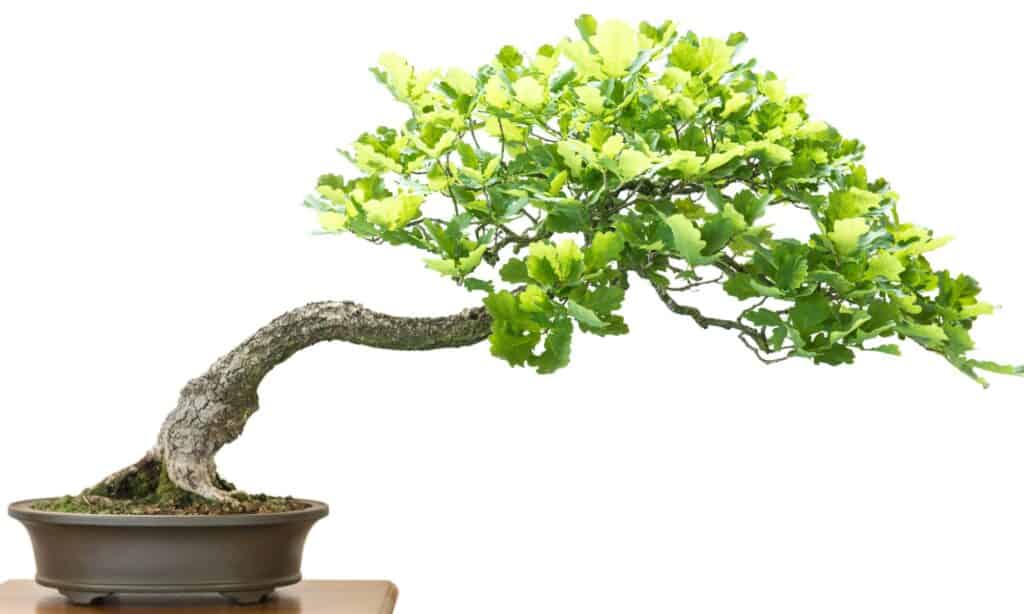
You can grow any type of oak tree as a Bonsai.
©iStock.com/photohomepage
| Oak Bonsai Tree Facts | |
|---|---|
| Botanical Name | Quercus |
| Common Types | black oak, white oak, pine oak, chestnut oak, bur oak, English oak, southern red oak, northern red oak |
| Sunlight | Full sun |
| Soil | Depends on the specific type of tree, but most oak Bonsai trees should do well with Bonsai soil mixtures. |
| Water | Oak Bonsai trees do not enjoy consistently wet soil. Water them when their soil is dry, but take care to keep the rootball from drying out all the way. |
| For Beginners? | Yes! Oak Bonsai trees are easy to care for and prune. |
| Indoors or Outdoors? | Outdoors in the summer months or year-round in warm environments. They do not handle frost very well. They can be brought inside to protect them from frost and freezing temperatures. |
| Pairs Well With… | Moss, rocks, and other natural ornaments! |
Common Types of Oak Bonsai Trees
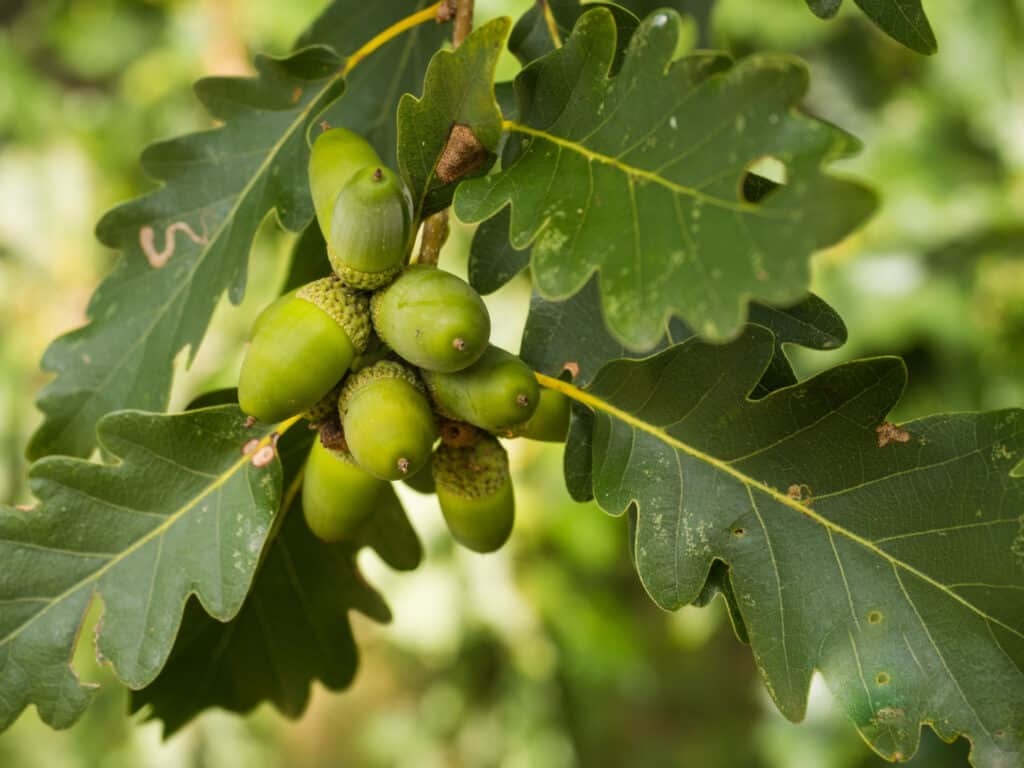
The national tree of Ireland, sessile oaks have distinctly rounded leaves.
©Hartmut Goldhahn/Shutterstock.com
There are over 500 types of oak trees in the world. They are known for being majestic, sturdy trees. Many of these types are well suited to Bonsai tree art because they are so sturdy.
Here are some of the most common types of oak Bonsai trees!
Black Oak
Black oak trees are native to North America. The name of these trees comes from the appearance of the tree’s outer layer of bark. This bark looks black in color. The inner layer of bark, however, is a yellow-orange color. These trees do not tolerate shade and thrive beneath full sun.
White Oak
White oak trees are named for their bark, which is a light, ashy color. They prefer full sun, though they have been known to tolerate partial shade. As a whole, white oak trees prefer moist, well-drained soil. Though they can acclimate to a variety of different soil types and conditions. White oak trees are native to North America
Pin Oak
Pin oak trees grow at a fast rate, more than 24 inches each year. They prefer full sun and can grow in just about any soil type or condition. Though they do not always like consistently wet soils. They also do not like alkaline soil. Pin oak trees can also tolerate heat well. They are native to North America.
Chestnut Oak
Chestnut oak trees are native to North America, specifically the state of Kentucky. They are known for their capacity to grow where other oak trees often cannot. Specifically, they can do well in rocky, steep areas. These trees prefer full sun and dry, well-drained soil. The leaves on these trees start out a soft pink color. Then they turn to silver. Finally, they reach their standard dark green color.
Bur Oak
Bur oak trees are known for their adaptability and their long life. However, they grow very slowly at less than 12 inches every year. They can tolerate different soil types as well as levels of moisture. They can even survive somewhat in conditions of drought. They prefer full sun. The acorns that come from bur oaks are the largest out of all the oak trees.
English Oak
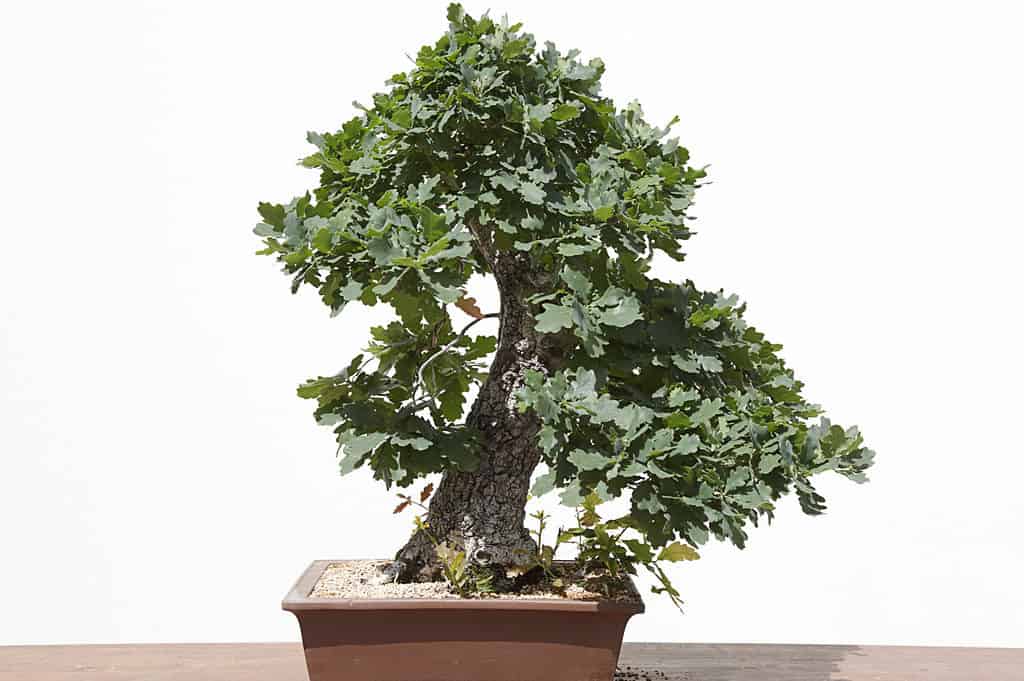
English oak trees make great Bonsai tree specimens.
©Raquel Pedrosa/Shutterstock.com
English oak trees are native to Europe, Asia, and Africa. Especially in England, they are also called common oak. They prefer full sun and can do well in just about any soil type or condition. Though they prefer soil that is moist and well-drained. They do not like humid environments, nor extreme cold.
Northern Red Oak
Northern red oak trees are native to North America. They grow at a moderate to fast rate, for up to 24 inches per year. They prefer full sun and can do well in just about any soil type or condition. They do prefer moist soil, even though they can tolerate some drought. The catkins on this tree appear in late spring and are yellow-green in color.
Southern Red Oak
Southern red oak trees are native to North America. The bark on these trees starts out smooth and gray but eventually matures furrowed and black. These trees do best in partial shade, though they can tolerate full sun. These trees need dry soil and prefer sandy, loamy, or clay soil. As a whole, southern red oak trees grow at a moderate to fast rate.
Caring for Your Oak Bonsai Tree
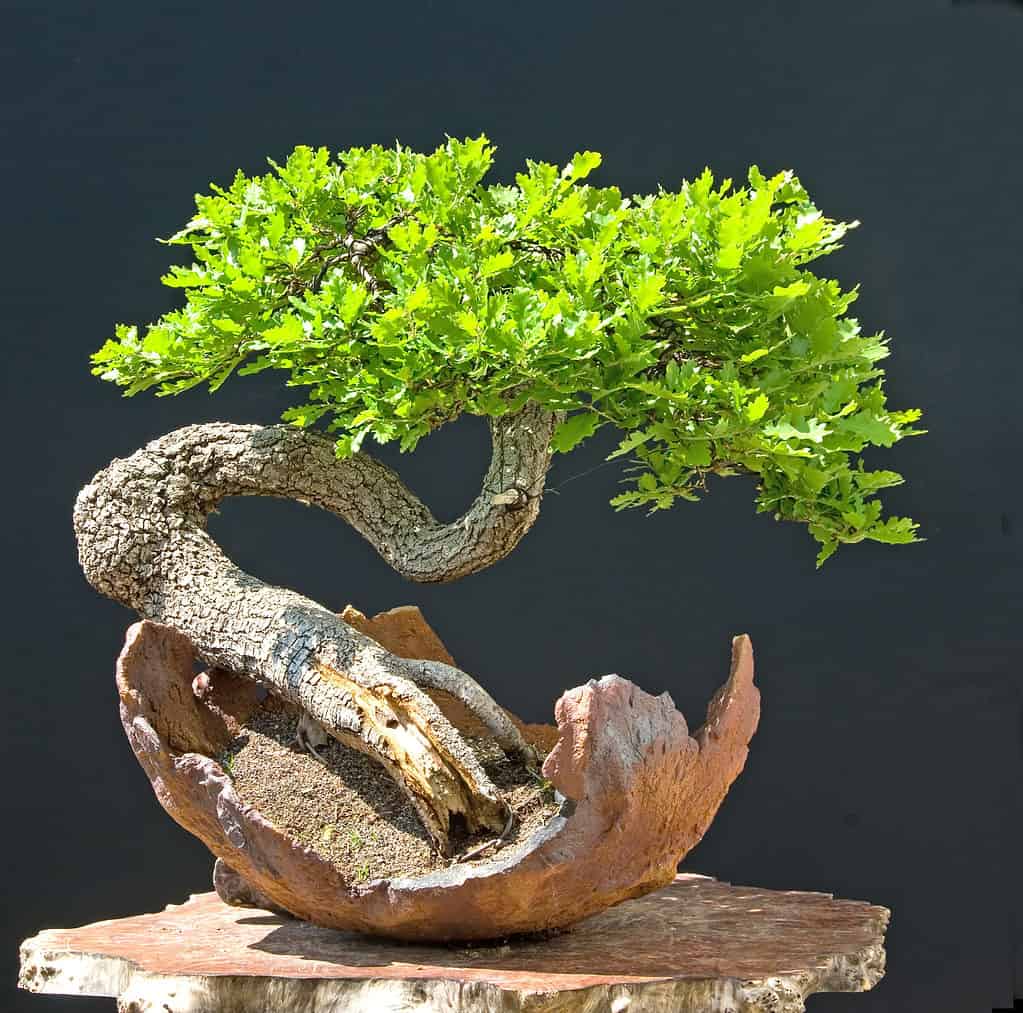
While they are growing, oak trees generally prefer full sun in an airy area.
©Walter Pall/Shutterstock.com
One of the reasons why oak trees are so widespread is that they are rather adaptable. This makes it easy to care for an oak tree. Caring for an oak Bonsai tree is also relatively easy. They are fast-growing, which means that you will need to prune them more often. But pruning an oak Bonsai tree is just as simple as growing one!
Here are some guidelines for caring for an oak Bonsai tree, so you can make sure that your tree grows its best!
Sunlight
As a whole, most oak trees prefer full sun. There are some that can tolerate partial shade, but they are few and far between. For best results, let your oak Bonsai tree soak up as much sun as it can.
Soil Type
For the most part, a large number of oak trees seem to tolerate different kinds of soil. Many oak trees do best in soil that is well-draining, though. Bonsai tree soil mixtures are designed to be well-draining, so most oak Bonsai trees should do well with this kind of soil.
Water
Oak Bonsai trees do not enjoy constantly wet soil. They need thorough watering only when the soil is dry to the touch. You can water them less in the winter, but take care to not let the rootball dry out all the way.
Placement
Placing a Bonsai tree so it can grow properly can be tricky. Fortunately, oak trees make this very easy!
While they are growing, oak trees generally prefer full sun in an airy area. During winter months, it is best to keep your oak indoors. You can put them in a greenhouse, too, as long as you can keep it free from frost.
Pruning Your Oak Bonsai Tree

If you want to become a Bonsai tree artist, you need the right tools for the job.
©Olena Antonenko/Shutterstock.com
The best time to do the most pruning on your oak Bonsai tree is in the spring before the tree begins to bloom. You can remove the biggest leaves on your oak Bonsai tree every so often. But if you remove too many leaves, this can weaken the tree, so be careful!
Ideal Oak Bonsai Tree Styles
Since oak trees have strong trunks, they are often best suited to Bonsai tree styles that feature upright styles and positions. Styles like this include Chokkan, Sokan, Kabudachi, and Hokidachi.
Propagating Your Oak Bonsai Tree
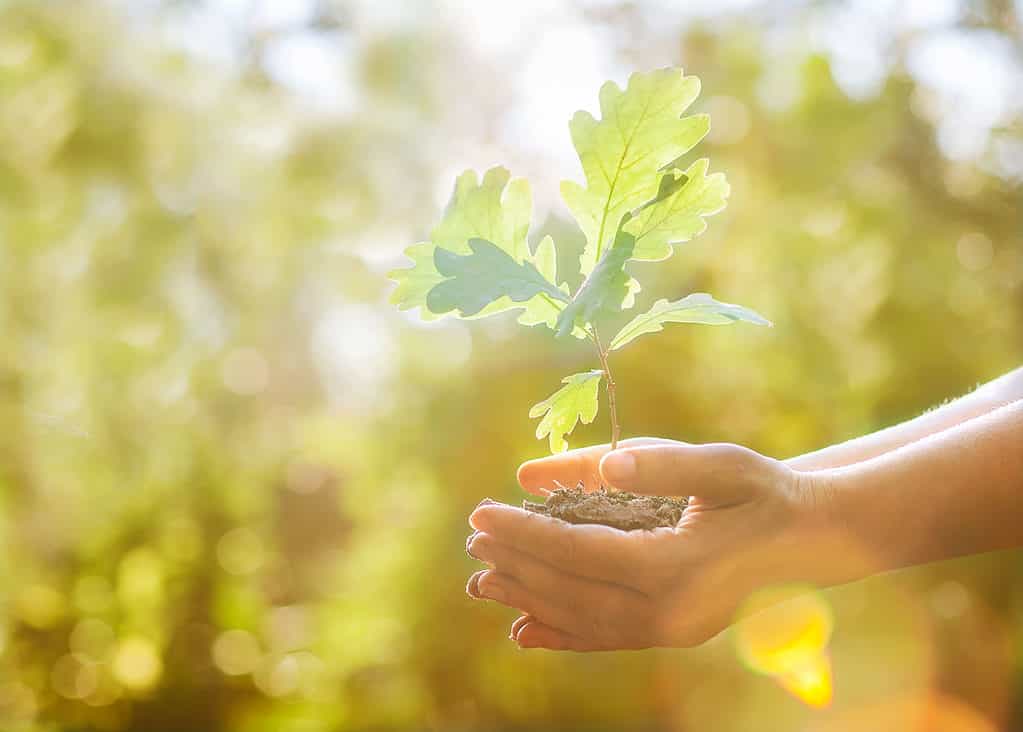
One of the best ways to establish an oak Bonsai tree is from seed.
©Rock and Wasp/Shutterstock.com
The best, and easiest, way to propagate an oak Bonsai tree is from the seeds of an oak tree. However, cuttings are also possible for propagation purposes.
Common Problems with Oak Bonsai Trees
Unfortunately, oak Bonsai trees are susceptible to a number of pests, insects, and diseases. They are known to suffer from powdery mildew, as well as bacterial leaf scorch, pine-oak gall rust, and oak leaf blister. Though the latter three are less common.
Caterpillars and aphids can also disturb these trees, though they are often not too harmful. They can be easily removed with a jet of water. That way, you don’t have to resort to chemical pesticides if you do not want to.
The photo featured at the top of this post is © Raquel Pedrosa/Shutterstock.com
Thank you for reading! Have some feedback for us? Contact the AZ Animals editorial team.






